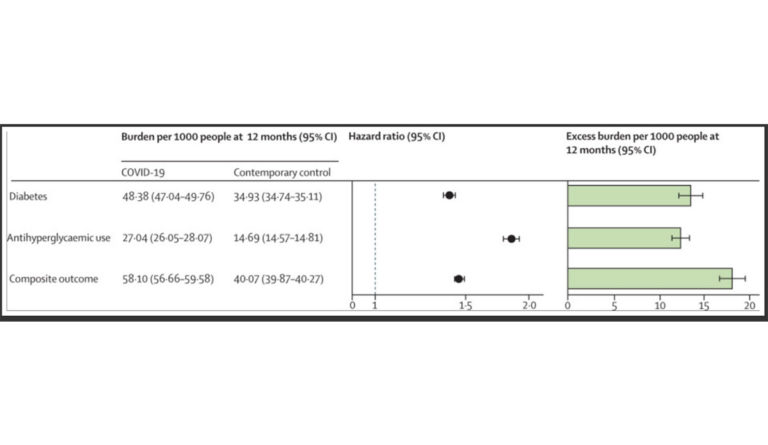Diabetes after COVID
Individuals with a history of COVID-19 infection were 1.4 times more likely to develop diabetes that those who did not have COVID-19.

Read Time: 2 minutes
Published:
Diabetes is a life changing disease that affects 34.2 million people in the U.S. With over 81 million cases of COVID-19 in the U.S., Yan Xie and Dr. Ziyad Al-Aly examined data from the Department of Veterans Affairs to compare risk of developing diabetes between people who had COVID-19 and those who did not. The graph shows how many more individuals per 1,000 developed diabetes in the group who experienced COVID-19 infection.
Individuals who had COVID-19 had 1.4 times the risk of developing diabetes. The graph on the left shows that, for each 1,000 people who had COVID, this translates into 18 excess cases of a diabetes-related diagnosis. Increased risk was found among all who had COVID-19, but risk of diabetes increased based on the severity of coronavirus illness.
People with low income and people of color have had greater incidence of COVID-19 infection during the pandemic. These groups are therefore likely to see greater rates of diabetes in the years ahead.
People with diabetes face medical costs estimated to be 2.5 times higher than the average person in the U.S. Insulin is a common treatment for diabetes, particularly when the disease progresses, but insulin prices continue to climb, and millions of people with diabetes already face this economic burden. Diabetes following COVID-19 infection could put even more people at the mercy of high medical costs.
Screening for diabetes as part of post-COVID-19 care and increasing access to affordable medications can help reduce the strain on these patients with newly-developed diabetes.
Databyte via Yan Xie, Ziyad Al-Aly, Risks and burdens of incident diabetes in long COVID: a cohort study. The Lancet, 2022.



